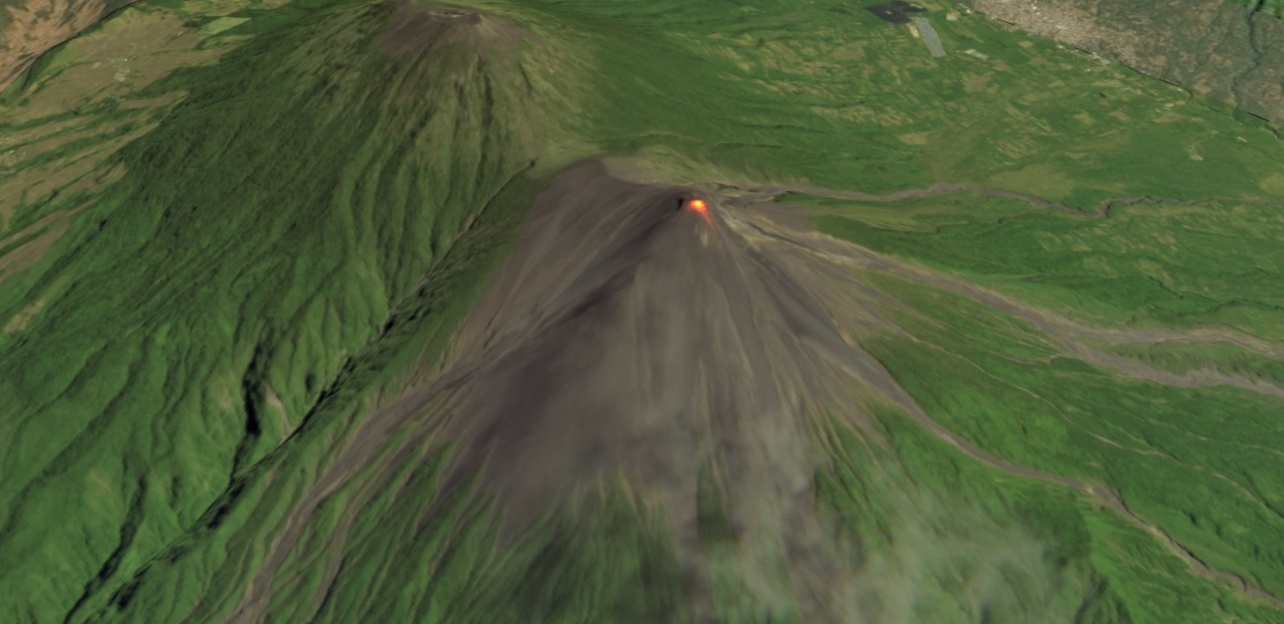Strong strombolian activity continues at Fuego volcano, Guatemala

Strong strombolian activity continues at Guatemalan Fuego volcano, with volcanic ash reaching up to 4 800 m (15 748 feet), according to the National Institute for Seismology, Vulcanology, Meteorology, and Hydrology of Guatemala (INSIVUMEH).
Up to 14 moderate to strong strombolian-type explosions per hour were recorded over the past 24 hours, INSIVUMEH reported at 12:44 UTC on March 5, 2020.
Volcanic ash columns reached heights up to 4 800 m (15 750 feet) high, drifting west and southwest approximately 20 km (12.4 miles) away.
Ashfall was reported in Yepocapa, Morelia, Panimache, Sangre de Cristo, La Cruz, Santa Sofia and other places in the area at least 12 km (7.4 miles) away.
@StormHour Fuego volcano in Guatemala, a small sample of its nocturnal activity. pic.twitter.com/Nhcwj2Fydo
— David Rojas Fotografía (@DavidRojasGt) March 4, 2020
The volcano spewed incandescent material about 300 to 500 m (980 to 1 640 feet) above the crater, generating moderate to strong avalanches in the direction of Taniluyá, Ceniza, Las Lajas, Trinidad, Seca and Honda canyons.

Image credit: Copernicus EU/Sentinel-2, ADAM, Antonio Vecoli. Acquired February 29, 2020.
Geological summary
Volcán Fuego, one of Central America's most active volcanoes, is one of three large stratovolcanoes overlooking Guatemala's former capital, Antigua. The scarp of an older edifice, Meseta, lies between 3 763 m (12 345 feet) high Fuego and its twin volcano to the north, Acatenango.
Construction of Meseta dates back to about 230 000 years and continued until the late Pleistocene or early Holocene. The collapse of Meseta may have produced the massive Escuintla debris-avalanche deposit, which extends about 50 km (31 miles) onto the Pacific coastal plain.
The growth of the modern Fuego volcano followed, continuing the southward migration of volcanism that began at Acatenango. In contrast to the mostly andesitic Acatenango, eruptions at Fuego have become more mafic with time, and most historical activity has produced basaltic rocks.
Frequent vigorous historical eruptions have been recorded since the onset of the Spanish era in 1524, and have produced major ashfalls, along with occasional pyroclastic flows and lava flows. (GVP)
Featured image credit: Copernicus EU/Sentinel-2, ADAM, Antonio Vecoli. Acquired February 29, 2020.

Commenting rules and guidelines
We value the thoughts and opinions of our readers and welcome healthy discussions on our website. In order to maintain a respectful and positive community, we ask that all commenters follow these rules.